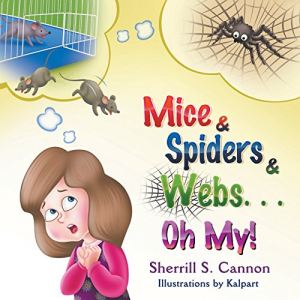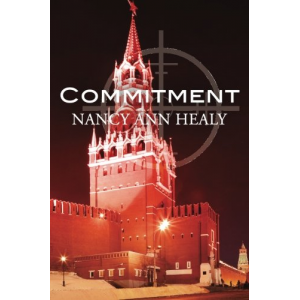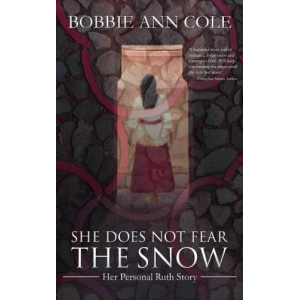Unheard Words
🔗 http://www.unheardwords.co.uk/selfpromote.htm- Author
- Book
- Story behind the book
- Media Links
- Reviews

Roy Pickering
About
Roy Pickering was born on the idyllic island of St. Thomas and currently resides in New Jersey with his wife and daughter. His debut novel Patches of Grey is available for purchase on Amazon in print and digital formats. Roy's second novel Matters of Convenience is also on Amazon in paperback and kindle editions, and it is set to become his first title available in audio book format in 2023. His novella Feeding the Squirrels can be found online only at both Wattpad and his blog - A Line A Day.
Roy's debut children's book is The Absolutely Amazing Adventures of Ava Appelsawse It is a team effort with his talented wife Erin Rogers Pickering who contributed the illustrations. The first book in the series is available at Amazon exclusively in print format. The second will be arriving soon.
Anthologies that house Roy's fiction include Proverbs for the People (Kensington Books), Role Call (Third World Press), The Game: Short Stories About the Life (Triple Crown Publications), and Prose to be Read Aloud, Volume One.
Happy to promote the writings of authors that he admires on social media along with his own work, Roy is a booktuber (Roy's Book Reviews is on YouTube), bookstagrammer (Instagram), and TikToker - along with being active on Facebook and Twitter.

Breaking Through the Spiral Ceiling: An American Woman Becomes a DNA Scientist
Description
Laura Hoopes takes you along as she tries to enter science in the 1960's in the post-Sputnik science education frenzy, only to find doors closed to women. She persists, makes a career of molecular gerontology and insists on making space for marriage and children in her life. This inspiring read says, "Yes, you can," to women who have dreams of their own.
Story Behind The Book
Media Links
Reviews
<p>Roy Pickering is a writer who lives in New Jersey. Roy wrote a book called <em>Patches of Grey</em>. It’s a coming-of-age novel, which is set in the projects of New York City. Most, if not all, of the people who live in the projects occupy a zone known as below-poverty-level. They are on welfare, live in subsidized housing, own nothing, have nothing and hope for nothing. Their daily lives revolve around drugs, violence and survival.</p> <p><em>Patches of Grey</em> is the story of Tony Johnson, who is a high school senior. Tony is bright and ambitious, and Tony wants out. Tony recognizes that there’s a great big world out there. He can’t imagine what it’s like - not really - but he knows it’s there. He has his sights set on a college scholarship as his magic carpet to a new life. Then he meets a girl. She is white. Tony is black. Which means Tony’s status - the amount of melanin in his skin - becomes a focal point of tension. And racial tension exists because people, who differ in skin-color, exist.</p> <p>Right away, the reader groans. Not another version of <em>West Side Story</em> steeped in the quandary of race relations and gangs and loss of innocence and heartache and teenage angst and blah, blah, blah. Yawn. Been there, done that.</p> <p>Actually, Roy Pickering pulls it off without sliding down the slippery slope into the miasma of the same old same old. He pulls it off because he’s one heck of a writer. His metaphors are wonderful, and far from cliché. And he moves from scene to scene smoothly and avoids making the reader feel like he’s being dragged along against his will. Pickering accomplishes this feat through restraint, unobtrusiveness, and delicacy of allusion. Which is a pretentious-literary-reviewer way of saying that the guy can really write.</p> <p><em>Patches of Grey</em> deftly immerses the reader in a world that, according to some, is black and white. Good and bad. Rich and poor. The haves and the have nots. Law-breakers and law-abiders. But in the end, the world isn’t that simple. Really, the world is made up of lots of grey patches - those areas where human beings compromise. Human beings compromise because they don’t know what else to do. And when compromise enters the picture, a sense of tarnish oozes across the panorama.</p> <p>In <em>Patches of Grey</em>, many of the characters are tarnished. Tony’s father has black skin, but he’s a grey person. His bitterness and hatred of everything and everybody, especially of himself, make him grey. Janet, who is Tony’s white girlfriend, suffocates in cloudy thinking, which results in grey actions. She tries to please everyone and doesn’t please anyone, not even herself.</p> <p>In the end, Tony steps out of the grey patches and walks into the light. Which means the conclusion of the story is far from cliché. In fact, it’s unpredictable. And this alone recommends the book - because in the end, <em>Patches of Grey</em> is about the cost of loss, the cost of being human, the human cost of life not turning out the way it should.</p> <p>All that being said, the reviewer would make a suggestion to Roy Pickering, who has written an admirable novel in <em>Patches of Grey</em>. Roy should ramble on in his next book. Choose a meandering story of Roberto Bolano-like aspect, and let his tremendous talent seize control of him, rather than him trying to control his talent. For as Nicole Kidman told Tom Cruise in <em>Days of Thunder</em> - another coming-of-age-story - “control is an illusion.” And if/when that artistic surrender happens - to quote Led Zeppelin - “ramble on.” Let the words flow. And because Roy Pickering’s talent is astonishing and ignores every precedent, he doesn’t need to be bound by the constraints of a traditional novel. With his literary gift, he can jump out of that box and nurture his advantages. He can produce an epic novel as vast and as powerful as the tundra of Siberia.<br /><br /><strong><em>Reviewed by Randall Radic at AlvahsBooks.com</em></strong></p>






